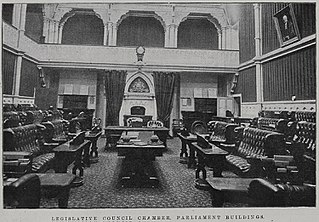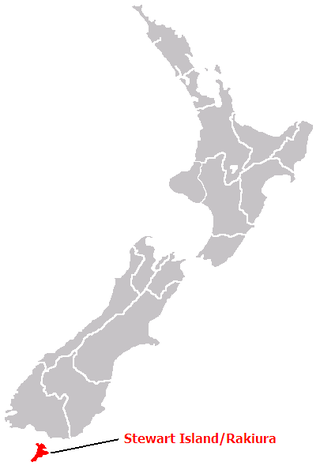A lieutenant governor, lieutenant-governor, or vice governor is a high officer of state, whose precise role and rank vary by jurisdiction. Often a lieutenant governor is the deputy, or lieutenant, to or ranked under a governor — a "second-in-command", rather like deputy governor. In Canadian provinces and in the Dutch Caribbean, the lieutenant governor is the representative of the monarch in that jurisdiction, and thus outranks the head of government, but for practical purposes has virtually no power.

The provinces of the Colony of New Zealand existed as a form of sub-national government. Initially established in 1846 when New Zealand was a Crown colony without responsible government, two provinces were first created. Each province had its own legislative council and governor. With the passing of the New Zealand Constitution Act 1852 the provinces were recreated around the six planned settlements or "colonies". By 1873 the number of provinces had increased to nine, but they had become less isolated from each other and demands for centralised government arose. In 1875 the New Zealand Parliament decided to abolish the provincial governments, and they came to an end in November 1876. They were superseded by counties, which were later replaced by territorial authorities.

Alfred Domett was the fourth premier of New Zealand, a close friend of the poet Robert Browning and author of the epic poem Ranolf and Amohia, a South Sea Day Dream. Born in England, he emigrated to New Zealand in 1842 and remained there for a further thirty years, holding many significant political posts.

The New Zealand Legislative Council was the upper house of the General Assembly of New Zealand between 1853 and 1951. An earlier arrangement of legislative councils for the colony and provinces existed from 1841 when New Zealand became a colony; it was reconstituted as the upper house of a bicameral legislature when New Zealand became self-governing in 1852, which came into effect in the following year.
New Ulster was a province of the Colony of New Zealand that existed between 1841 and 1853. It was named after the Irish province of Ulster.

The constitution of New Zealand is the sum of laws and principles that determine the political governance of New Zealand. Unlike many other nations, New Zealand has no single constitutional document. It is an uncodified constitution, sometimes referred to as an "unwritten constitution", although the New Zealand constitution is in fact an amalgamation of written and unwritten sources. The Constitution Act 1986 has a central role, alongside a collection of other statutes, orders in Council, letters patent, decisions of the courts, principles of the Treaty of Waitangi, and unwritten traditions and conventions. There is no technical difference between ordinary statutes and law considered "constitutional law"; no law is accorded higher status. In most cases the New Zealand Parliament can perform "constitutional reform" simply by passing acts of Parliament, and thus has the power to change or abolish elements of the constitution. There are some exceptions to this though – the Electoral Act 1993 requires certain provisions can only be amended following a referendum.

William Gisborne was the first New Zealand Cabinet Secretary from 1864 to 1869, Colonial Secretary of New Zealand from 1869 to 1872, and Minister of Public Works between 1870 and 1871. The city of Gisborne in New Zealand is named after him.

Major General Robert Henry Wynyard was a British Army officer and New Zealand colonial administrator, serving at various times as Lieutenant Governor of New Ulster Province, Administrator of the Government, and was the first Superintendent of Auckland Province.

The New Zealand Constitution Act 1852 was an Act of the Parliament of the United Kingdom that granted self-government to the Colony of New Zealand. It was the second such Act, the previous 1846 Act not having been fully implemented. The purpose of the Act was to have constitutional independence from Britain. The definition of franchise or the ability to vote excluded all women, most Māori, all non-British people and those with convictions for serious offences.

New Leinster was a name given to the Stewart Island in the Royal Charter of November 1840, which stated the division of New Zealand into three parts. The division only held a geographic significance. In the 1846 New Zealand Constitution Act, the area known as New Leinster was incorporated into then established New Munster Province. It was named after Leinster, one of the provinces of Ireland.

The New Zealand Constitution Act 1846 was an Act of the Parliament of the United Kingdom intended to grant self-government to the Colony of New Zealand, but it was never fully implemented. The Act's long title was An Act to make further Provision for the Government of the New Zealand Islands, and it received the royal assent on 28 August 1846.
The following lists events that happened during 1853 in New Zealand.
The following lists events that happened during 1852 in New Zealand.
The following lists events that happened during 1849 in New Zealand.
The following lists events that happened during 1848 in New Zealand.
The following lists events that happened during 1846 in New Zealand.

South Island nationalism refers to a nationalist movement in the South Island of New Zealand.

The Colony of New Zealand was a colony of the United Kingdom of Great Britain and Ireland that encompassed the islands of New Zealand from 1841 to 1907. The power of the British Government was vested in the governor of New Zealand. The colony had three successive capitals: Okiato in 1841; Auckland from 1841 to 1865; and Wellington from 1865, which continues as the capital of New Zealand today.
The first New Zealand Legislative Council, also known as the General Legislative Council, was established in 1841 when New Zealand was created as a Crown colony separate from New South Wales. The Legislative Council consisted of the governor, the colonial secretary, the colonial treasurer, and senior justices of the peace; all members were appointed. From 1848, there were additional provincial Legislative Councils for New Ulster and New Munster. The general Legislative Council had twelve sessions, and the first ten were held in Auckland while the last two were held in Wellington. In May 1852, an act provided for two thirds of the membership of the provincial Legislative Councils to be elected. Elections for the New Ulster Province had already been held when news was received that the New Zealand Constitution Act 1852 had been passed by the Parliament of the United Kingdom. No meeting of the elected members was ever called. The New Zealand Constitution Act 1852 disestablished the Legislative Council when writs for the first election of members of the New Zealand House of Representatives were returned. The original Legislative Councils ceased to exist in September 1853.











